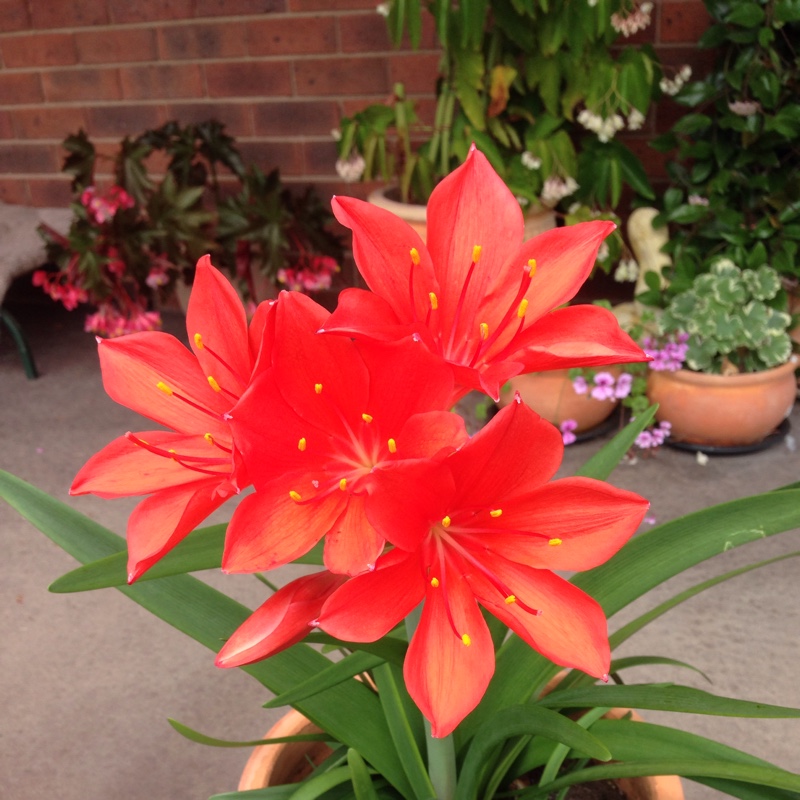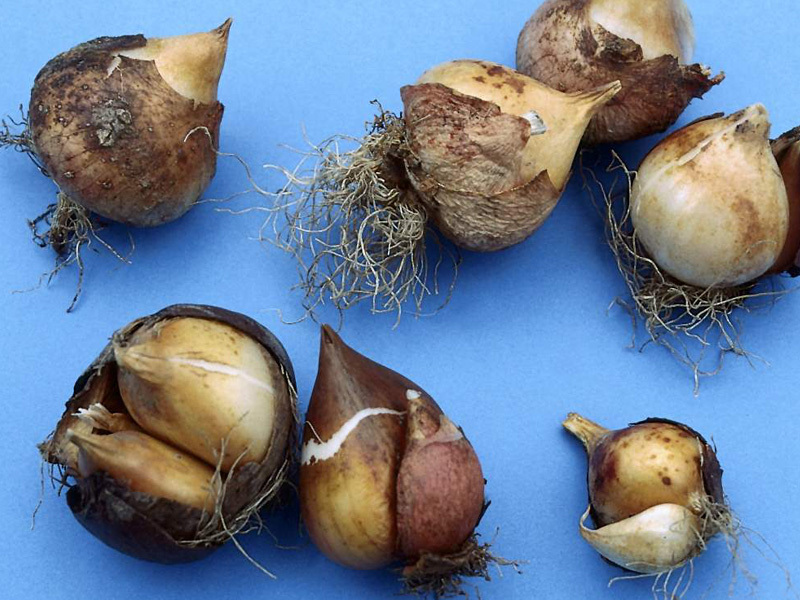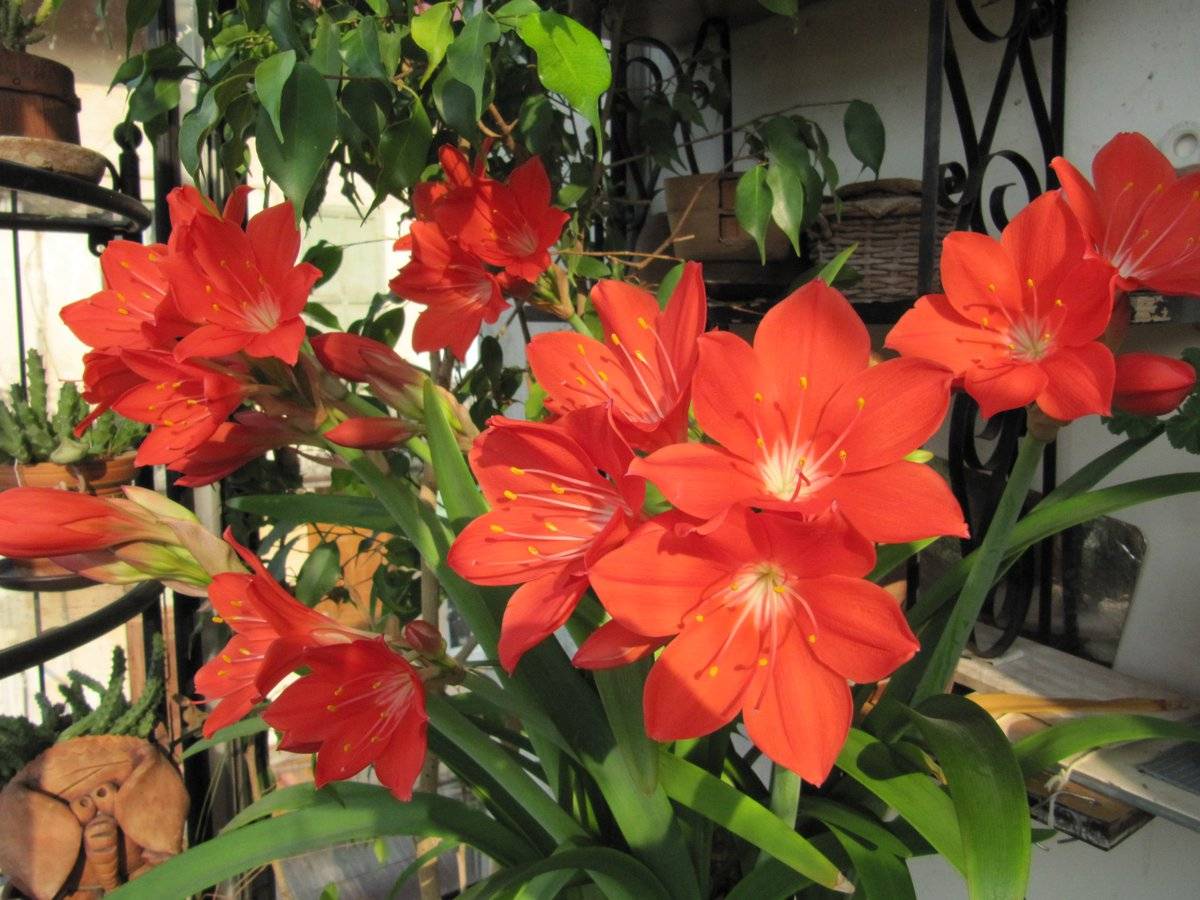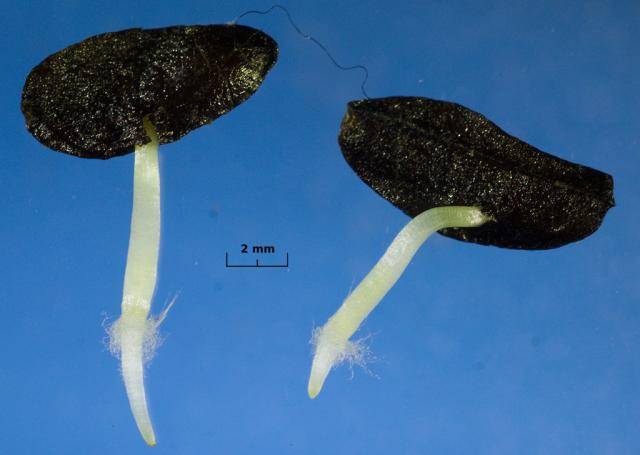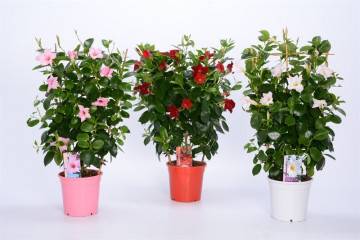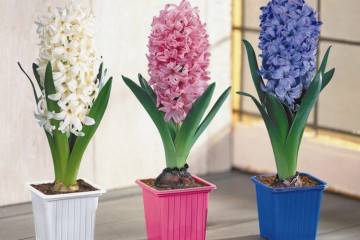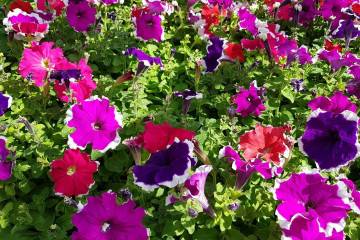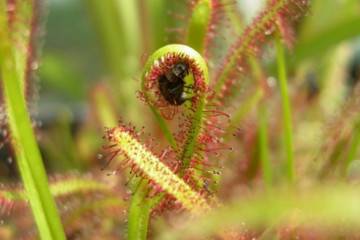Vallot flowers - care and cultivation at home
Content:
Vallota is a flower that grows in a subtropical climate, belongs to the Amaryllis family. Also, ornamental culture quickly adapts to indoor conditions. Subject to all agrotechnical requirements, it blooms not only beautifully, but also for a long time. A large number of different varieties have been bred by breeders.
Description of flower varieties
As mentioned earlier, there are a large number of different varieties of wallot, but the most common are purple and lovely. Each of them has its own individual characteristics.
Vallota Speciosa
The bulb of an ornamental plant is ovoid. Over time, the middle part of the bulb begins to thicken and therefore increase in size. The diameter ranges from 4-8 cm. The neck is widened and gradually turns into leaves. Forms a large number of children.
The leaves form luxuriantly on both sides, forming a fan. The shape of the leaf plates is belt-like, in length they can reach 50 cm, and in width they do not exceed 3 cm. The middle vein of the leaf is practically invisible, from which it seems flat, the color is uniform light pink. Over time, the leaves gradually turn yellow, wither and fall off.
A peduncle rises from the central part of the bulb. Inside, its cavity is empty, but growth is extremely fast: within 24 hours it can increase in length up to 2 cm. In general, it can reach 35 cm in height. The culture of the house begins to bloom three weeks after the formation of the peduncle. From 3 to 6 flowers are formed on it. Visually, they are very similar to lilies, the diameter of each flower is up to 10 cm, the length is no more than 7 cm.
The color of the petals can be orange, red and bright red. The saturation of the hue depends on the amount of light in the room. The flowering period of each flower is 1 week, and the inflorescences are more than a month.
Vallota Purpurea
A characteristic feature of this man-made species is the olive-colored leaves. Their length does not exceed 30 cm, and their width is about 5 cm, the shape is sword-shaped.
Growing purple walloth is easy. Blooms mainly in autumn. During this period, several peduncles are formed, each with no more than 8 miniature flowers of a red saturated color with a pronounced purple tint.
Vallotta: care and cultivation at home
In care, the houseplant vallotta is unpretentious and does not have specific requirements for growing. To ensure long-term flowering, it is enough to adhere to simple and simple rules.
The plant is light-loving, so it is recommended to place the pot with the culture on the eastern side of the apartment on the windowsill. If the air temperature exceeds 25 ° C, then it is necessary to regularly irrigate the leaves with clean water without chlorine content. You also need to increase the frequency of watering.
In winter, the frequency of watering is reduced taking into account the air temperature in the room. Transplants are carried out in case of emergency.This is due to the fact that the plant is difficult to tolerate injury to the bulbs. The optimal frequency of transplants is once with an interval of 2-3 years. It is necessary to carry out the procedure only in the spring or on the condition that a strong growth of the bulbs is noticeable.
During the procedure, children must be separated from the bulbs. The neck of the planting material is strongly discouraged from deepening into the soil. Several drainage holes are made in the container to prevent moisture from stagnating. Sand and pebbles are used to organize the drainage layer.
Why do the leaves turn yellow
Before hibernation, the plant does not lose leaves, but at the same time renews them with the arrival of spring. This process is completely natural and should not be a cause for concern. But if young foliage begins to change its color, then this can be an alarming symptom. It is necessary to carefully examine the culture for the presence of mealybugs and spider mites.
Preparing for flowering
To grow a healthy and abundantly flowering ornamental plant, it is important to know about all the features of planting, transplanting and caring for it. In order for the vallota to bloom, the plant should not be transplanted into large pots. It is better that the container is, on the contrary, a little cramped. If she has a lot of space, the vallot will direct all her forces and resources not to flowering, but to the formation of new children. Before flowering, you must carefully separate the children.
Propagation of vallotta bulbs
Bulb propagation is the more common method because it is easy to implement and reliable. It is possible to plant in the ground only those bulbs that already have, albeit poorly developed, but their own root system, otherwise the baby will not take root.
During transplantation, each baby is dropped into a separate container. In diameter, it should not exceed 9 cm. In the thickness of the earth, they can be immersed no deeper than 2/3. At the very initial stage of bulb development, watering should be moderate.
Growing a wallot from seeds
This method of reproduction is used much less often and mainly by breeders. The most suitable time for sowing seeds in pre-moistened soil is October-November. To create a greenhouse effect, the plant is covered with transparent plastic wrap or glass. Containers with seeds must be regularly ventilated to avoid the development of fungal diseases. For successful germination of seed, the air temperature in the room should not fall below 16 ° C.
Growing a tropical plant vallot is possible not only for experienced flower growers, but also for beginners. In care and cultivation, the culture is unpretentious, requires a minimum of attention to itself.
